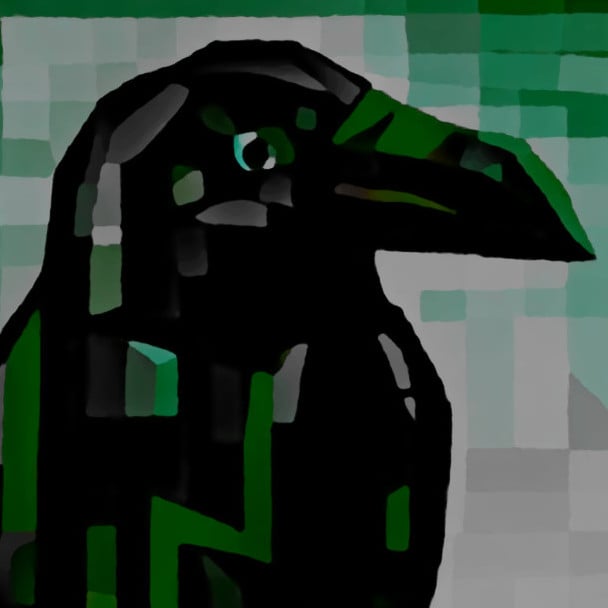For everyone confused, the term monkey refers to the infraorder Simiiformes. Simians include macaques, marmosets, and yes, great apes like chimps and us. So for decades people are being pedantic about “apes not monkeys” but monkeys/Simians includes apes.
Real pedants know monkeys aren’t apes, but apes are monkeys.
Can someone explain for the non-biologists? I never heard of chimps being classified as monkeys.
Linnaean taxonomy classifies apes and monkeys as two closely related groups. This is the classification system most people are taught in grade school.
Cladistics is a style of classification that seeks to organize species and groups of species from when they branched off of other groups of species. In this style, everything is defined by novel features, but they are still members of the more ancient clade. Birds for instance, would be a novel clade emerging from Dinosaurs, and thus all birds are also dinosaurs, but not all dinosaurs are birds.
Because there are two groups of monkeys with unique characteristics (new world and old world), and apes have unique adaptations not found in either group, we have no way of cladistically defining a monkey in a way that meaningfully does not also include apes.
As a side note, this is where the phrase “there is no such thing as a fish” comes from. ‘Fish’ in the Linnaean sense are a huge and diverse category. Two random members of the fish class would likely be far, far more distantly related than a random mammal and a random reptile.
Ah, so chimps are monkeys in the same way that whales are fish.
deleted by creator
Technically more like an archaeon that learned a few tricks.
deleted by creator
more like chimps are monkeys in the same way that whales are mammals
I get you’re being facietious, but it’s more like chimps are monkeys in about the same way a hammerhead shark and a lungfish are different.
Apes are Old World monkeys.
In taxonomy (the system of biological classification), monkeys (Simiiformes) are an infraorder of the order of primates (Primates). Apes (Hominoidea) in turn are a superfamily within the Simiiformes. It’s an “every thumb is a finger, but not every finger is a thumb” situation.
Can somebody explain for the non-english natives? I didn’t know there’s a difference between apes and monkeys.
The easiest way to tell the difference is that monkeys have tails and apes don’t. Chimps are definitely apes and I’m not sure what OP is getting at.
What I’m getting at is taxonomy. A valid taxon has to include all descendents of the crown group. That means that for monkeys to constitute a valid taxon, apes must be included. Same reason why birds are technically dinosaurs.
A monophyletic clade must include all descendants. A taxonomic group itself can hold anything.
Viruses can also integrate DNA into cells and it sticks there forever sometimes, thus bypassing the tree entirely (making it a network, i.e. no longer acyclic thus no longer a tree).
There is a lot of weirdness in the world, stranger than people have dreamed.:-P
Fair enough. I just belong to the people who require a valid taxon to be monophyletic. (Btw., “clade” already implies monophyleti…city? Monophyleticness?)
Also, shut up about viruses, they make a mess of everything and are beautifully chaotic and I hate them and I love them. xD
I will never shut up about viruses - they are aliens on earth, or like something I dunno but they are so fucking cool!

Also shouldn’t it be “monkies”
I am not a biologist, but the way I was taught was that monkeys have tails and apes do not.
As far as the spelling, “monkeys” is correct.
You may be thinking that you want the plural of monkey, but because it ends in y the ending should become -ies. For example: berry -> berries
However, that rule is a little more complicated, and the ending of monkey is -ey. Because there is a vowel before the y the ending you don’t have to change the -y to -ie and instead simply add -s
English is stupid.
English is stupid
As a native English speaker I have to agree
Though going through the vocabulary thoroughly can lead to tough and interesting things
Like nouns as verbs, that shit’s fire
This feels relevant:

Super relevant, thank you for sharing
I freaking love Calvin and Hobbes
so, frequently people will conflate monkeys and apes, and use the terms interchangably (that’s the left end of the graph), people with a bit more knowledge may be aware of the common definition that monkeys have tails while apes do not (that’s the middle part), while those with more knowledge of biological taxonomy argue that, since new world monkeys and old world monkeys share a more distant common ancestor than old world monkeys and apes, if we want to define a term ‘monkey’ that encompasses both new and old world monkeys, it would have to also include all apes (including humans). so, according to the right side of the graph people, chimpanzees are apes are monkeys (though lots of monkeys are not apes, it’s a squares and rectangles kinda thing).
Du kennst diese Gruppen vermutlich als Affen und Menschen-Affen.
So monkeys are rectangles and chimps/apes are squares.
apes are squares
Yeah! Screw apes.
A’d tortoises are turtles
You’re a monkey
Here is an interesting breakdown of you want more information
Isn’t this about the racism?
see: mpox








